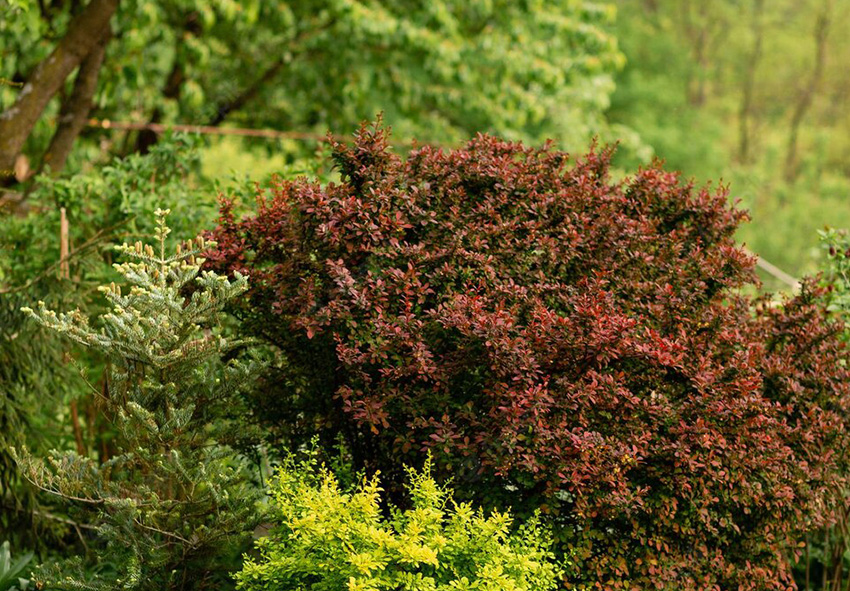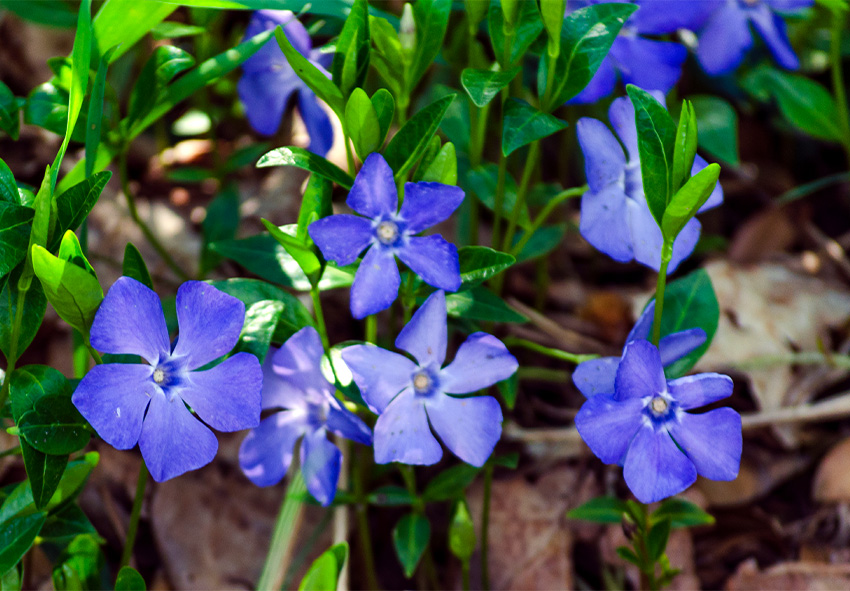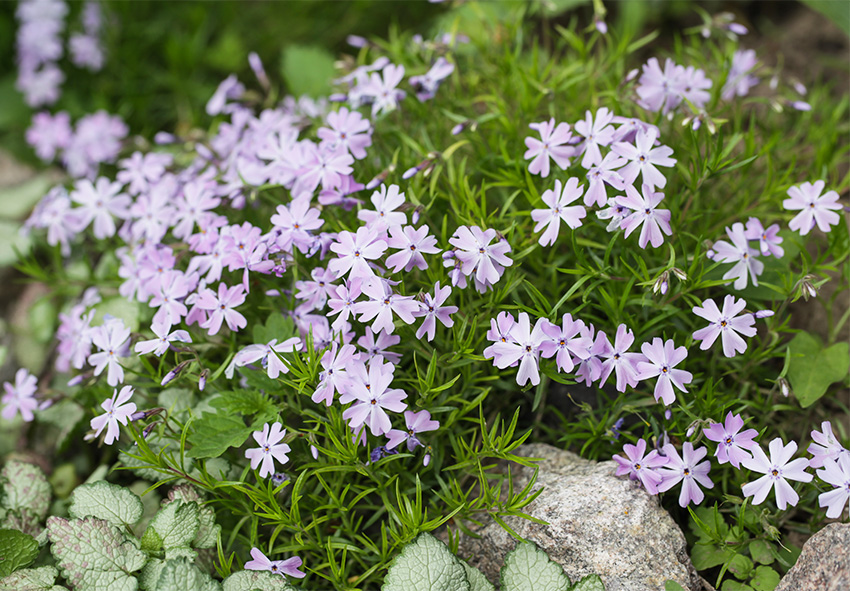Soil erosion is a natural process where the top layer of soil is worn away by water, wind, or human activity. Left unchecked, it can lead to significant landscape damage, reduced soil fertility, and even environmental hazards like landslides. Using plants to control erosion is an effective and eco-friendly solution, as they stabilize the soil, reduce water runoff, and beautify the area. This article explores the best plant types for erosion control and how they contribute to maintaining healthy landscapes. Our gardening blog is a perfect place to find all the information you need!
How Plants Help Control Erosion
Plants play a crucial role in preventing soil erosion by stabilizing the ground with their roots, reducing water runoff, and shielding the soil from wind and rain. Different plant structures contribute uniquely to erosion control, making them an essential part of any sustainable landscape. Understanding how plants work to protect the soil can help you choose the best species for your needs.
Root Systems and Soil Stabilization
The strength and structure of a plant’s root system play a crucial role in preventing soil erosion. Deep-rooted plants anchor the soil, while fibrous roots create a dense network that holds soil particles together. Below are some of the most effective root systems for soil stabilization.
- Fibrous Roots – Found in grasses and ground covers, these roots spread out widely, forming a strong mat that stabilizes topsoil.
- Taproots – Deep, central roots, like those of oak trees and alfalfa, penetrate the soil to anchor it firmly.
- Rhizomes – Underground stems that produce new shoots, such as those in bamboo and horsetail, help bind the soil and prevent shifting.
- Adventitious Roots – Roots that grow from stems or leaves, commonly seen in vines or some shrubs and bushes, providing extra stability.
- Mycorrhizal Root Networks – Fungal associations with plant roots improve nutrient uptake and strengthen soil structure.
- Spreading Root Systems – Roots of trees like willows and poplars spread widely, helping to hold soil in place over large areas.
Water Absorption and Runoff Reduction
Plants help absorb rainfall, reducing the amount of water that flows over the surface and carries soil particles away. By acting as natural sponges, plants like trees and grasses mitigate runoff and prevent the formation of gullies. This function is especially vital in regions prone to heavy rain.
Ground Cover and Soil Protection
Ground cover plants create a protective layer over the soil, shielding it from the erosive forces of rain and wind. These plants spread quickly, filling in gaps to ensure no bare soil is exposed. This reduces the impact of raindrops and minimizes the risk of erosion.
Best Types of Plants for Erosion Control
Choosing the right plants for erosion control depends on factors such as soil type, climate, and landscape conditions. Some plants, like ground covers and grasses, spread quickly to protect the soil, while shrubs and trees provide long-term stability with deep root systems. Below are some of the most effective plant types for erosion control.
Grasses and Native Grasses
Grasses, particularly native species, have extensive root systems that provide excellent soil stabilization. Switchgrass, Buffalo Grass, and Fescue are excellent examples. Native grasses adapt well to local conditions and often require less maintenance than non-native varieties. These grasses are particularly effective for preventing erosion in open fields and along riverbanks.
Shrubs and Small Bushes

Shrubs and small bushes are woody plants that offer long-term erosion control. Their robust root systems anchor the soil effectively, while their foliage provides a windbreak. Juniper, Sumac, and Dogwood are highly recommended for erosion-prone areas. These shrubs also serve as habitat for wildlife, adding ecological value to the landscape.
Ground Cover Plants
Ground cover plants are low-growing species that spread horizontally, forming a dense mat over the soil. These plants are ideal for preventing erosion on slopes and hillsides. Creeping Phlox, Periwinkle, and Sedum are popular choices because of their rapid growth and low maintenance requirements. Additionally, they add aesthetic value with their vibrant colors and textures.
Trees for Erosion Control
Trees are powerful tools for erosion control, especially in areas prone to landslides or severe soil degradation. Willows, Oaks, and Poplars are excellent choices because of their deep and expansive root systems. These trees not only stabilize the soil but also provide shade, reducing soil temperature and preventing moisture loss.
Drought-Resistant Plants
In arid and semi-arid regions, drought-resistant plants are essential for erosion control. Lavender, Sage, and Yarrow thrive in dry conditions and require minimal water, making them ideal for erosion-prone areas. These plants not only conserve water but also bring beauty and fragrance to the landscape.
How to Choose the Right Plants for Your Landscape
Selecting the best erosion control plants requires careful consideration of your environment and maintenance preferences. Native species often perform better because they adapt well to local conditions, while non-native plants may need extra care. By evaluating soil type, climate, and growth habits, you can create a low-maintenance, erosion-resistant landscape.
Consideration of Soil Type and Climate
Understanding your soil type and climate is critical when selecting plants for erosion control. Sandy soils may require plants with deep roots, while clay soils benefit from fibrous-rooted species. Matching plant types to local conditions ensures success.
Native vs. Non-Native Plant Species

Choosing between native and non-native plants for erosion control depends on factors like adaptability, environmental impact, and maintenance requirements. Compare both options and choose the one that suits your garden best:
| Feature | Native Plants | Non-Native Plants |
| Adaptability | Well-suited to local climate and soil conditions, requiring minimal care | May struggle to adapt and often need extra water, fertilizer, or maintenance |
| Environmental Impact | Support local ecosystems by providing food and habitat for native wildlife | Can become invasive, outcompeting native species and disrupting ecosystems |
| Maintenance Needs | Generally low-maintenance, as they have evolved to thrive in the area | May require more attention to control growth and prevent spreading |
Maintenance and Growth Habits
Choose plants that align with your ability to maintain them. Fast-growing plants like grasses may need regular trimming, while slower-growing shrubs might need less attention. Consider the long-term growth habits to avoid overcrowding or competition.
Additional Erosion Control Strategies
While plants are highly effective in preventing erosion, combining them with other landscaping techniques can enhance their effectiveness. Mulching, terracing, and companion planting are great ways to maximize soil stability and reduce water runoff. In addition to these methods, incorporating perennials to boost the garden ecosystem can further promote a healthy, balanced environment while ensuring a long-term solution for erosion control. Use a combination of these methods:
- Mulching for Extra Protection: Mulching is a simple yet effective way to enhance erosion control. Mulch retains moisture, regulates soil temperature, and protects the soil surface from erosion. Organic mulches like straw, wood chips, or bark are excellent options.
- Terracing and Retaining Walls: Terracing and retaining walls are landscaping techniques that complement plants in controlling erosion. They reduce the slope’s gradient, making it easier for plants to establish themselves and prevent runoff. These methods are especially effective for steep hillsides.
- Companion Planting for Maximum Effect: Combining different plant types, such as ground covers with shrubs or trees, enhances soil stabilization. Each plant type contributes unique erosion control benefits, creating a robust defense against soil loss. Companion planting also improves biodiversity and the visual appeal of the area.
Conclusion
Plants are a natural and sustainable solution to soil erosion, offering both environmental and aesthetic benefits. From ground covers to trees, the right plant choices can transform erosion-prone areas into stable and thriving landscapes. Take the first step toward protecting your soil by exploring our store’s collection of erosion control plants. With the right tools and knowledge, you can create a resilient and beautiful outdoor space.
Frequently Asked Questions (FAQs) about Plants for Erosion Control
1. What are the best plants for erosion control in a home garden?
The best plants for erosion control in a home garden include ground covers like creeping phlox and periwinkle, deep-rooted grasses like fescue, and shrubs like juniper and sumac. These plants help stabilize soil, reduce water runoff, and protect against wind and rain erosion, making them excellent choices for preventing soil loss.
2. Can I order any erosion control plants in your online store?
Yes! Our online store Dutch-bulbs.com offers a variety of erosion control plants, including hardy shrubs and bushes like spireas. These plants are excellent for stabilizing soil and preventing erosion in different landscapes. Browse our selection to find the best options for your needs!
3. Can I use trees for erosion control?
Yes, trees are highly effective for erosion control, especially in areas prone to landslides or heavy runoff. Trees like willows, oaks, and poplars have deep, spreading root systems that stabilize soil over large areas. Their roots absorb excess water, while their canopies reduce the impact of heavy rainfall on the ground.
4. What is the best erosion control method for steep slopes?
For steep slopes, a combination of deep-rooted plants, terracing, and ground cover is ideal. Trees and shrubs provide strong root support, while low-growing plants like creeping juniper or sedum protect the surface. Terracing and retaining walls help slow water runoff, preventing soil displacement and making slopes more stable over time.
5. How long does it take for erosion control plants to be effective?
The effectiveness of erosion control plants depends on their growth rate and root development. Fast-growing ground covers and grasses can provide stabilization within a few months, while shrubs and trees take longer to establish deep root systems. Combining different plant types ensures both short-term and long-term erosion control for optimal soil stability.
Published: 07.02.2025

